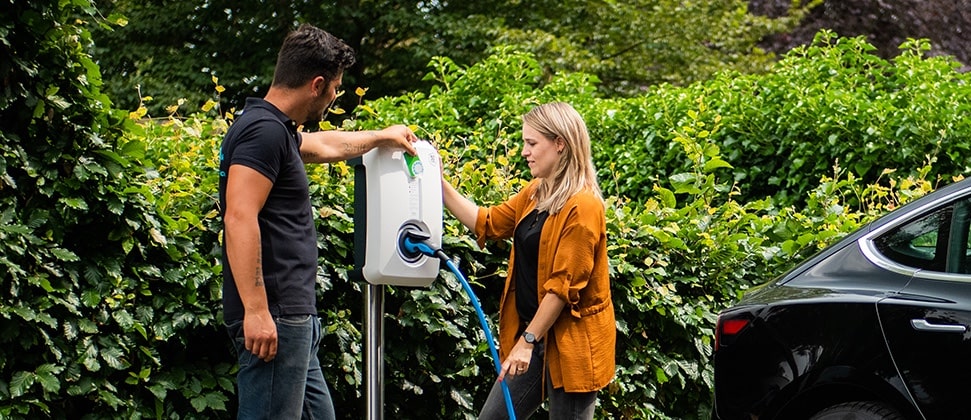
Can infrastructure keep up with EV sales?
The race for infrastructure is on. Both private and public institutions are focusing on developing public charging networks to keep up with the demand. Even when an EV owner has a home charging station, there is a need to put up more public EV charging stations to power up their vehicles while on the move. Therefore, it is an obligation to the government and other innovative companies in this field to improve infrastructure and keep up with the EV demand.
Acknowledging infrastructure gap
EV customers admit that inadequate charging stations is a challenge. Contrary to previous EV price and driving range challenges, the infrastructure is now the issue at hand. It is saddening that the challenge is expected to be more serious soon as more drivers are opting for electric vehicles. EV prices have now dropped and there is a significant extension on the driving range, leaving an emerging issue on the charging infrastructure. According to expert analysis by Andersen, a British charge point manufacturer, there is a significant variance in terms of the availability of residential charging infrastructure in the UK. Although London ranks among the best with the number of charging points, these charging points vary greatly in different boroughs.

The current charging problem would now double if the issue is not addressed. There will be double congestion in existing public charging points, which will lead to an increase in rates. It is even more serious as there is an increase in local infrastructure, which means new charging stations are necessary. As most EV car owners spend the night at home, charging stations in residential structures would ease the problem. Vehicles would charge overnight, so there would be less congestion at public stations during the day. Innovative businesses that deal with EV charging systems should come in handy to help deal with this. It is already a problem and with the increase in EV sales, it will be more severe.
Keeping up with EV sales
Different parts of the UK are now focusing on the infrastructure to meet the EV demand. It is evident that EVs are rapidly taking over, replacing hybrids in the market. Furthermore, the sales figures indicate that many more consumers are opting to go the greenway instead of petrol or diesel-powered cars. Therefore, there is a need to install more EV charging stations to meet the demand. This means that there should be provisions or rates that discourage charging at particular times to avoid congestion and encourage people to install charging stations at their homes. Moreover, there are proposals that direct residential charging and direct current fast charging (DCFC).
It vital to loosen up on the installation of direct current fast charging as EV owners can charge quickly hence alleviate range anxiety. However, high charges discourage DCFC, which is a serious challenge. There is a need to modify the UK’s DCFC charges by expanding the business incentive rate. Therefore, different cities need to adapt the DCFC policies to encourage direct charging, keeping up with EV sales.

To meet the infrastructure gap, utilities should spread the charging infrastructure cost to all customers. This will ensure that the new charging capacity rate hardly impacts the average consumer. However, to meet these objectives, states need to approve their EV infrastructure programs. Some parts of the UK have already approved their EV infrastructure programs. With this, there is hope for comfortable EV driving without having to worry about the power limit. Though their structure varies, other states can follow their example in keeping up with the rising demand on EVs.
Since 2011, when there were fewer electric vehicles, the UK government has run an EV grant. To emphasise the infrastructure, the government included a £400m budget on charging points in 2017. They also issued a directive to accept proposals from companies that would manage the fund and deliver more charging stations. Furthermore, an EV law act will allow local authorities to install charging stations where they need to be. Even if the UK’s energy network has enough power to support many EVs, the challenge is the ability to charge all of them at the same time. The solution to this is smart charging and the government is focusing on adapting this.
The UK government has an important role to play in meeting the EV structure gap. Government grants would boost the installation of charging stations and help pay part of the electricity bill. Besides, the government can encourage installing a home charging station as EV owners can charge their cars throughout the night. Not only with this reduce congestion in public stations but also reduce range anxiety.
Fast, slow and super-fast charging

Incorporating technology in the charging infrastructure will help deal with this issue across the UK. Existing charging infrastructure category include:
Wireless charging
The charging system utilises electromagnetic waves to charge car batteries. A charging pad attached to a wall socket with a plate linked to the car aids in the charging process. Technology developments in level 2 chargers provide up to 11 kilowatts power.
Alternate-current charging
Also referred to as level 1 or 2, the system includes an inbuilt car inverter that converts AC to DC. This then charges the car battery either at level 1 or level 2. It can operate up to 20 kilowatts of power.
DC charging
The DC charging is convenient as it converts AC to DC before entering the car. In addition, the charging system does not require an inverter. Also known as level 3, direct current fast-charging operates at 25 to more than 350 kilowatts power.
Final word
Although the UK is facing an infrastructure gap, there are ways to mitigate this. With strategised infrastructure programs like in New York, there is hope in filling the gap. The UK government should be more consistent on the matter and adopt fast technology charging systems. EV charging is already a problem and can be more serious in the future if nothing is done.


